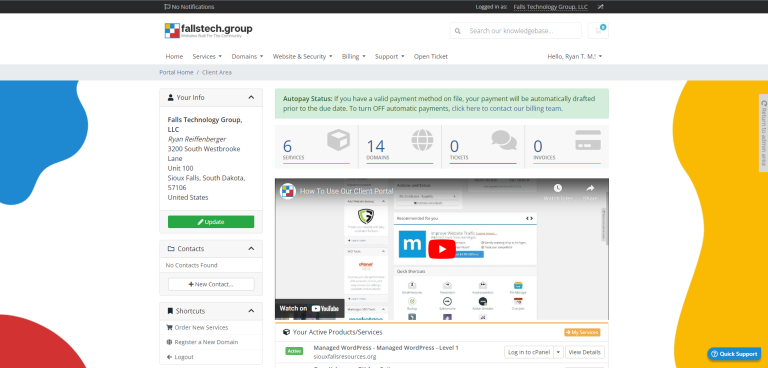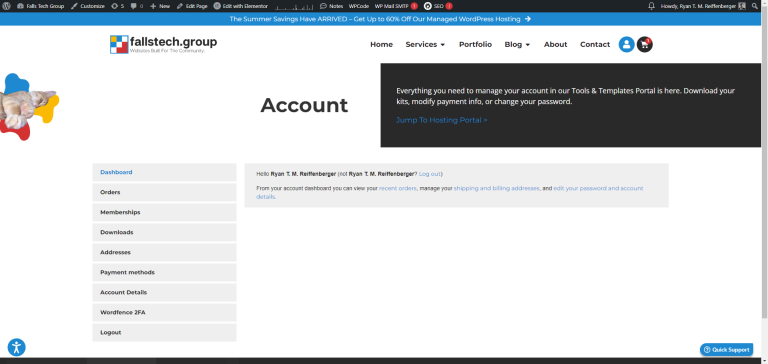Whenever we run across a client website that isn’t working properly, one of the most common issues that we see that causes problems for clients is an outdated WordPress installation. More often than not, be it an unexpected 404 error, a strange error message, or a flat-out broken website – when looking at the updates, it’s almost always several versions behind. The importance of keeping WordPress up to date is reaffirmed when a simple update fixes a seemingly bigger issue.
In this article, we’re going to talk a little bit about why these updates are so important, and some of the steps that you can take to be proactive in keeping your WordPress installation running at its best.
Why Do I Need To Update WordPress?
TL:DR – because things get old and worn out, and better things are always in development that improve security, performance, and reliability.
WordPress and Plugin developers are constantly implementing new technologies, features, and security patches into their software that are intended to help bring further stability, usability, and security to your WordPress installation as a whole.
Updating your plugins and WordPress core is a lot like performing routine maintenance on your vehicle. Every so often, you need to check fluid levels, tire pressures, and perform service on the vehicle to make sure its running well, and performs reliably for you. Websites (not just WordPress), are much the same. While most websites don’t require a massive amount of ongoing care, one of the items that every website needs – is updates.
When updating your website, you are not only helping to improve the performance and stability of your website, but you are also actively protecting your site from potential threats. Malicious parties are always seeking to develop new ways to exploit existing frameworks and technologies, which is why developers release patches so frequently for their software. The internet moves quickly, and developers have to keep up.
Updates can even bring new features for plugins that are in active development, enhancing your experience, and giving you new ways of managing your content on the internet. We saw this particularly frequently during the emergence of generative AI for consumer use, in that many plugins released updates shortly after that allowed their plugin to utilize generative AI to help improve the user experience. This can drastically cut down on the amount of time spent managing your site, and optimizing it for the web.
Increase WordPress Performance For FREE With These Tips!
Sign up for our FREE email series and improve your website load speeds!
The Benefits of Updating WordPress
To help break down the different types of things that can be included in an update, we’ve put together this quick list for you:
- Security Improvements: These can come in the form of patching vulnerabilities, removing outdated libraries and updating to the latest technologies, or even adding new features to help harden the security of the website itself. This is especially important for security plugins in WordPress.
- Compatibility: As developers develop new frameworks and libraries, older things can become obsolete, and as a result, code can stop working. Updating your plugins and core ensure that everything is running at the latest version, and will help ensure that all of your plugins and core files will be compatible with each other.
- Bug Fixes: Not every program is perfect, and neither are the developers who build it. Mistakes happen, and processes sometimes need to be optimized. By installing updates, you’re giving the developers the chance to optimize their code, correct for errors, and provide an all around more stable product for you.
- Performance Improvement: As researchers and developers continue to push the boundaries of what’s possible in web hosting, software continues to get faster, and servers perform better. As a result, sometimes updates are required to ensure that your website can take advantage of these improvements.
- New Features: Additionally, you may find that developers are actively developing new features for the plugin, or even the WordPress core itself. Staying up-to-date ensures that you have the latest and greatest to work with to keep your website running well.
How to Run WordPress Updates
The WordPress content management system has an update page that allows you to manage everything easily from one spot. To access this screen and run updates, you can follow the instructions below:
Note: Before performing the steps below, we recommend taking a full backup of your website in case something breaks during the update process. While most updates are stable, it is best practice to ensure that you have a working copy before performing any big changes to your site like this.
- Log into WordPress
- Find your website name in the top-left corner, and click the Update Icon
 next to it. If it is not visible, your website is up-to-date.
next to it. If it is not visible, your website is up-to-date.

A screenshot of the top-bar in the admin panel of WordPress. - From here you can select all of the plugins and themes you want to run updates for, and even re-install the WordPress core if you believe that your installation may be broken.


